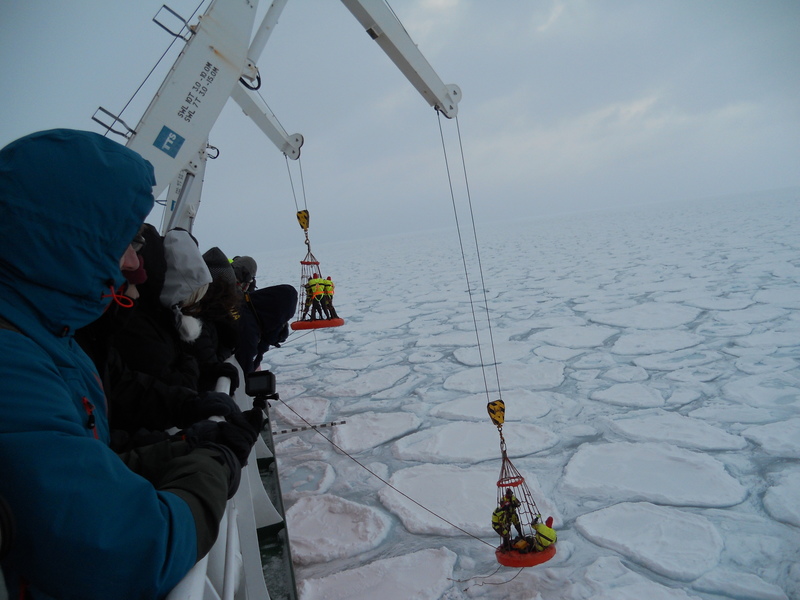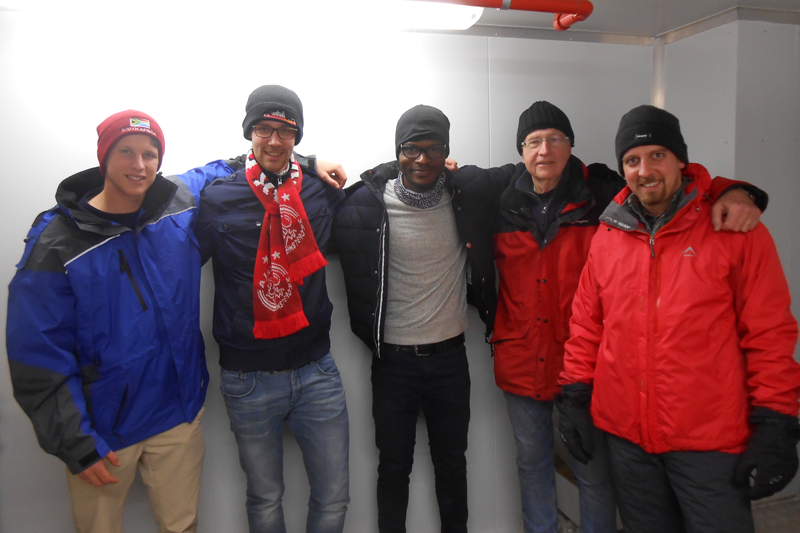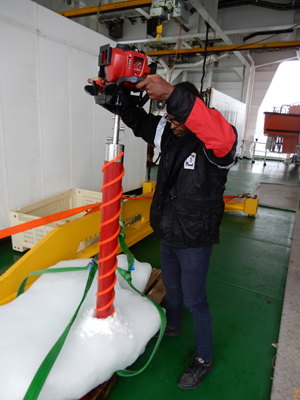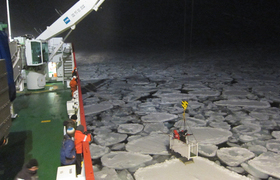Antarctic researchers break the ice
11 August 2017 | Story Supplied. Photos Supplied.
A second successful winter voyage aboard the ice-breaking research vessel SA Agulhas II into the Antarctic Marginal Ice Zone (MIZ) has been undertaken by members of the University of Cape Town (UCT) Sea Ice Research Team.
While the SA Agulhas II makes regular trips to the Antarctic in summer, the frequent storms and harsh conditions during winter make for a difficult working environment. Despite the conditions, the expedition was a success, building upon the first research trip carried out last year and continuing to expand the knowledge base about the region.
The MIZ Pilot Project is a multidisciplinary research effort, headed by Associate Professor Marcello Vichi from the Department of Oceanography, and Dr Keith MacHutchon and Dr Sebastian Skatulla from the Department of Civil Engineering. The principal objectives of the project for this trip were to:
- obtain core and pancake samples of the MIZ sea ice to determine physical and mechanical properties
- deploy trackers to measure floe movement and waves in ice
- carry out sea-ice observations for defining the boundaries of the MIZ
- collect data for the Antarctic Sea Ice Processes and Climate (ASPeCt) expert group.
The coring and pancake sampling were carried out by MacHutchon, Skatulla, civil engineering postgraduate students Rutger Marquart and Emmanuel Omatuku Ngongo, and chemical engineering postgraduate student Benjamin Hall.
The SA Agulhas II set sail from Cape Town for the Southern Ocean at the end of June. The ship reached the start of the MIZ on 4 July, after six days at sea. However, strong winds and waves shifted the ice eastwards at an unprecedented rate, making it impossible to reach consolidated ice within the available time.
This did not deter the team, however, who proceeded to carry out the deployment of the trackers onto pancake ice in high winds and sub-zero temperatures.

Pancakes were collected – the smaller ones were taken whole for physical and mechanical testing while the larger ones were cored on deck, allowing a greater variety and number of samples to be taken.
The samples were analysed on board the ship for their physical properties including temperature and salinity, with the majority being transported to UCT upon the return of the ship to Cape Town on 13 July. These samples will be stored at UCT and will undergo mechanical testing to determine the strength, stiffness, fracture toughness and viscous elasticity of sea ice as well as crystallographic investigations.
Both the physical and mechanical results will be used as parameter inputs for a computational model, which is being developed by the Computational Continuum Mechanics Research Group headed by Skatulla and overseas collaborators, who were also part of this voyage.

One aim is to study and predict the break-up and fracture evolution of sea ice during the Antarctic spring. The researchers also hope to advance understanding of the complex material behaviour of sea ice in terms of its liquid and gas-filled porous structural composition and elucidate the mechanisms of biogeochemical exchanges with the underlying ocean and the brine expulsion.
The expedition was an example of successful multidisciplinary and international collaboration between the Department of Oceanography and the Faculty of Engineering & the Built Environment at UCT as well as the Cape Peninsula University of Technology, Stellenbosch University, the Technical University of Dortmund, the University of Duisburg-Essen, the University of Melbourne and New York University Abu Dhabi.
Results and data from this trip will be shared between the collaborating parties, allowing a comprehensive and detailed understanding of the Antarctic MIZ to be developed. This is an ongoing endeavor, and the team hopes to build upon what was learnt in this expedition and return to the Southern Ocean next year to obtain further samples and data about pancake ice and to take core samples from consolidated ice.
 This work is licensed under a Creative Commons Attribution-NoDerivatives 4.0 International License.
This work is licensed under a Creative Commons Attribution-NoDerivatives 4.0 International License.
Please view the republishing articles page for more information.










